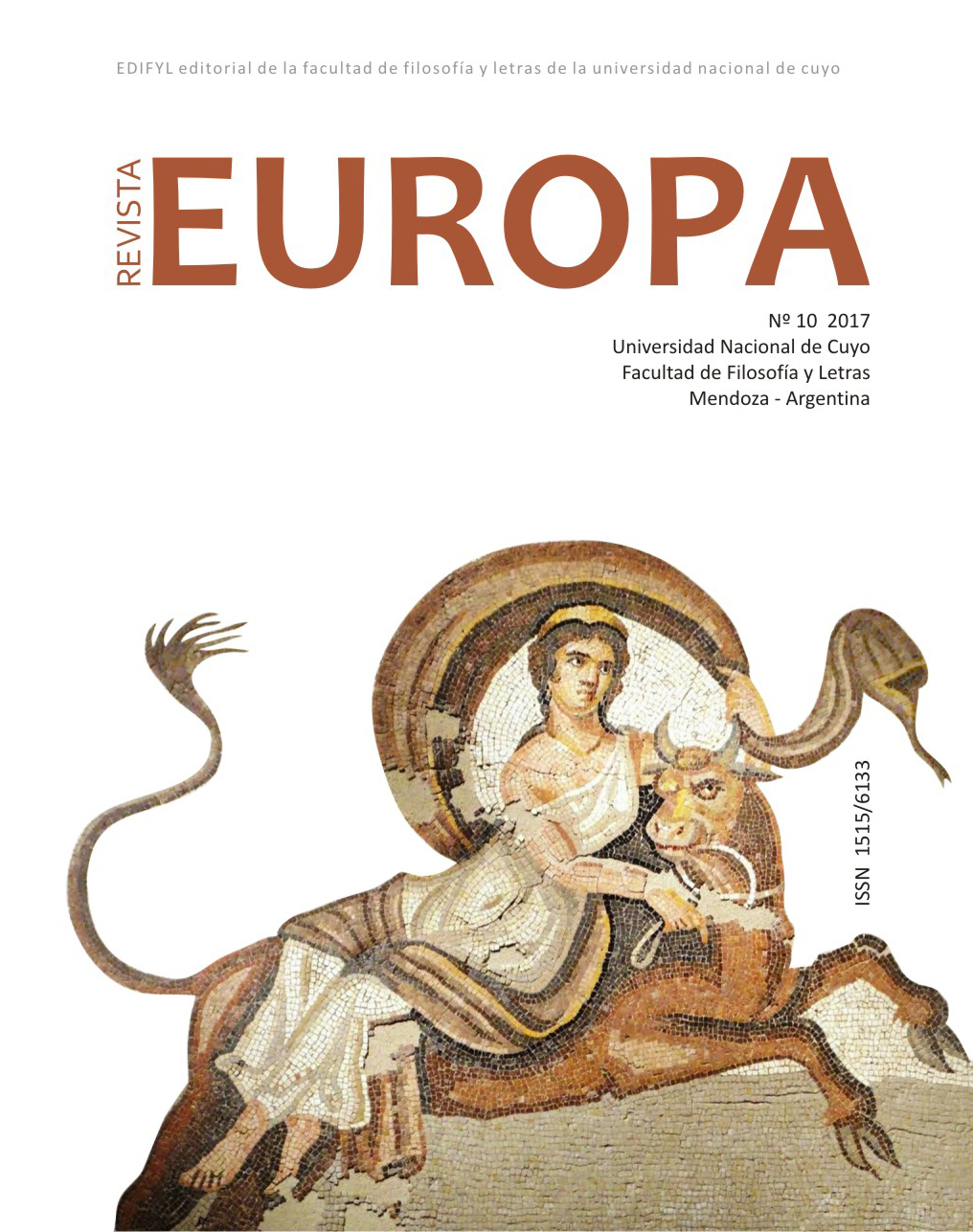"DIVIDIDO EN DOS PARTES EL ASUNTO" DISCREPANCIA EN TORNO A LAS COMEDIAS EN EL SIGLO DE ORO ESPAÑOL
Palabras clave:
Teatro español, Siglo de Oro Español, Lope de Vega, TeatrHistoria Social de la CulturaResumen
En la España del siglo XVII, las representaciones en los Corrales de Comedias significaron mucho más que una diversión en consecuencia provocaron una amplia controversia en torno a esta costumbre tan española, verdadera "fiebre nacional".
A partir de los estudios realizados por José Antonio Maravall, Agostina Sarracino e Ignacio Arellano sobre la polémica en torno a las representaciones de comedias y posterior reglamentación, nos proponemos realizar un aporte desde una perspectiva de Historia cultural de la sociedad, corriente que se entronca con los 4º Anales. Planteamos la posibilidad de identificar posibles argumentos sobre la licitud o beneficios de las representaciones, a partir del análisis de las fuentes editadas en la Colección de Fuentes para la Historia del Teatro en España, y del famoso Arte Nuevo de Hacer Comedias de Lope de Vega, para para reflexionar sobre si los podemos considerar como representaciones sociales (Chartier, 1992).
Los trabajos de investigación que estudian el tema suelen partir, entre otras cosas, de las relaciones entre poder y cultura desde un enfoque político, por lo que proponemos, sin desconocer esta importante perspectiva virar un poco la atención de lo político, para intentar identificar las relaciones sociales y el sistema cultural que las contiene.
En cuanto a la caracterización del sistema cultural y social seguimos a PITHOD A. Epistemología de las ciencias humanas y sociales "Considerados formalmente los sistemas culturales son conjuntos de ideas, creencias, valores, símbolos expresivos, etc. mas o menos integrados. En concreto se hallan en la psique de los sujetos portadores de esa cultura. El hombre no es solo causa eficiente de la cultura, sino término y materia de la actividad cultural. En el sujeto es decir en su vida concreta es dinámico, operativo pues se trata entre otras cosas de principios perfectivos de las potencias activas del todo humano". P, 76
Citas
VALVERDE C.,, Andrés M., LÓPEZ PIÑERO, J. M. y otros (1996) El siglo del Quijote (1580-1680). Vol. I Religión. Filosofía y Ciencia. Madrid: Espasa Calpe.
CHARTIER R. (1992) El mundo como representación. Barcelona: Gedisa.
CHARTIER R. La Historia hoy en día: dudas, desafíos, propuestas. En: Olavarri I. y Capistegui F. J. La Nueva Historia Cultural: la influencia del postestructuralismo y el auge de la interdisciplinariedad. Madrid: ed.complutense.
JODELET, D. (1986): «La representación social: fenómenos, concepto y teoría». En S. Moscovici (editor): Introducción a la psicología social. Barcelona: Paidós.
ZAVALETA, Juan de (1983). El día de fiesta por la mañana y por la tarde, 1660, Madrid: Castalia
LOPE DE VEGA Carpio (2003) El arte nuevo de hacer comedia. Alicante: Biblioteca Virtual Miguel de Cervantes. http://www. cervantesvirtual.com/obra/arte-nuevo-de-hacer-comedias-en-este-tiempo--0/
MARAVALL J. A. (1996). La Cultura del barroco. Análisis de una estructura Histórica. Barcelona: Ariel.
MATA IDURAÍN C. La sociedad española aurisecular en el teatro de Antonio de Solís: el amor al uso y el doctor carlino. En: Textos sin fronteras. Literatura y sociedad, II, ed. Hala Awaad y Mariela Insúa, Pamplona, Universidad de Navarra (Ediciones digitales del GRISO), 2010, pp. 133-152.
PFANDL L. (1942) Introducción al estudio del Siglo de Oro. Cultura y costumbres del pueblo español de los siglos XVI y XVII. Barcelona: Ed. Araluce.
NAVARRA, Ramiro de. Los peligros de Madrid. En: Lemir, 20, 2016. http://parnaseo. uv. es/Lemir/Revista/Revista20/textos/04_Peligros_Madrid. pdf
Descargas
Publicado
Número
Sección
Licencia
Quienes envíen trabajos a la Revista EUROPA, que edita la Asociación de Estudios Interdisciplinarios sobre Europa (ADEISE) de la Facultad de Filosofía y Letras de la Universidad Nacional de Cuyo (Mendoza, Argentina), otorgan automáticamente licencia no exclusiva y sin límite temporal de su manuscrito a dicha publicación. En consecuencia, como la distribución de la citada Revista no tiene finalidad lucrativa sino académica, el autor (los autores) autoriza(n) a la misma la difusión gratuita en formato impreso y medios electrónicos, tanto en red local como por vía internet.
Se establece que:
- Los/as autores/as conservarán sus derechos de autor y garantizarán a la revista el derecho de primera publicación de su obra.
- Los/as autores/as deben adherir a la la Licencia Creative Commons Atribución-NoComercial-CompartirIgual 4.0 Internacional, mediante la cual el autor permite copiar, reproducir, distribuir, comunicar públicamente la obra sin propósitos comerciales, por cualquier medio o formato. También, se pueden generar nuevas obras derivadas, siempre y cuando se cite y reconozca al autor original y su primera publicación en esta revista.
- Los/as autores/as podrán adoptar otros acuerdos de licencia no exclusiva de distribución de la versión de la obra publicada (p. ej.: depositarla en un archivo telemático institucional o publicarla en un volumen monográfico) siempre que se indique la publicación inicial en esta revista.
- Se permite y recomienda a los/as autores/as difundir su obra a través de Internet (p. ej.: en archivos telemáticos institucionales o en su página web) luego de su publicación, lo cual puede producir intercambios interesantes y aumentar las citas de la obra publicada. (Véase El efecto del acceso abierto).




